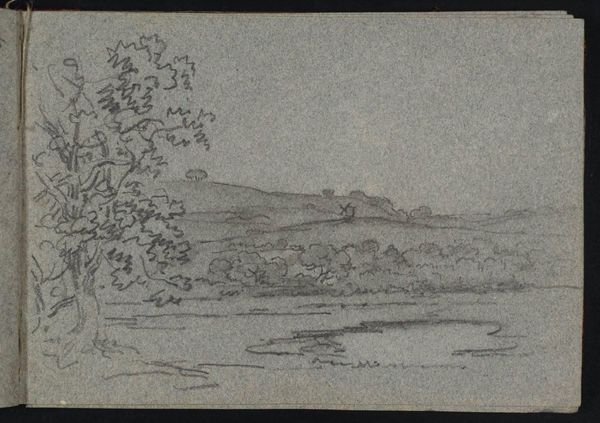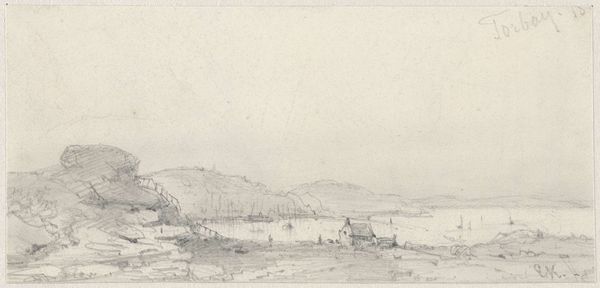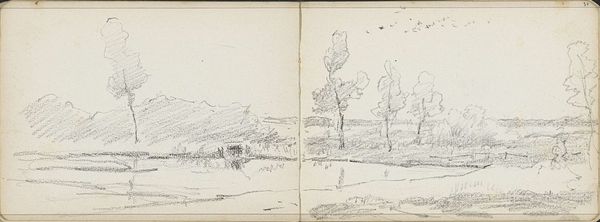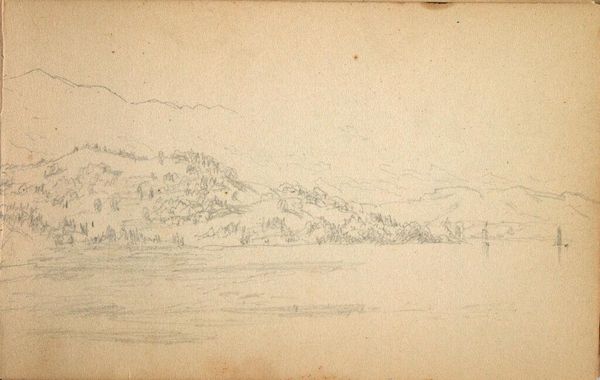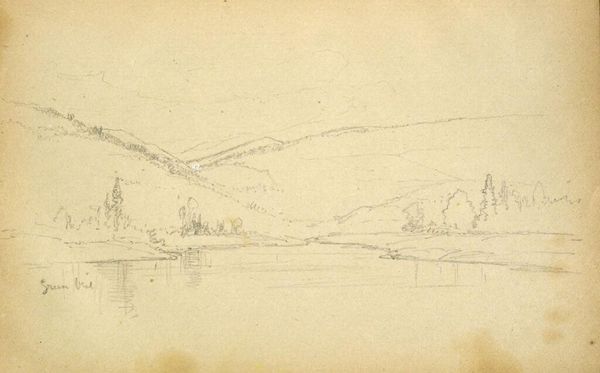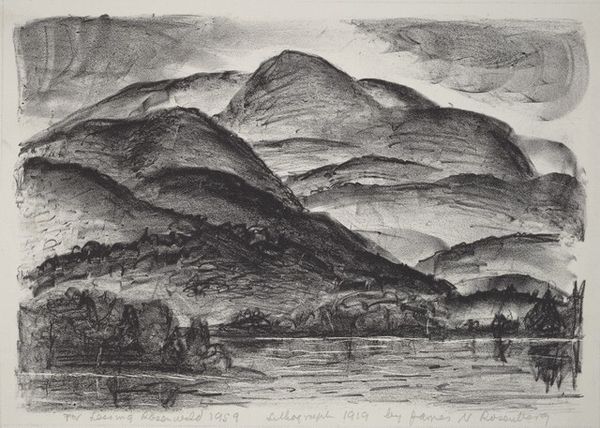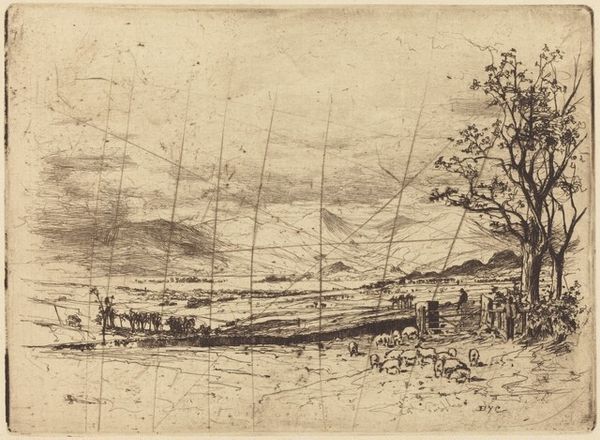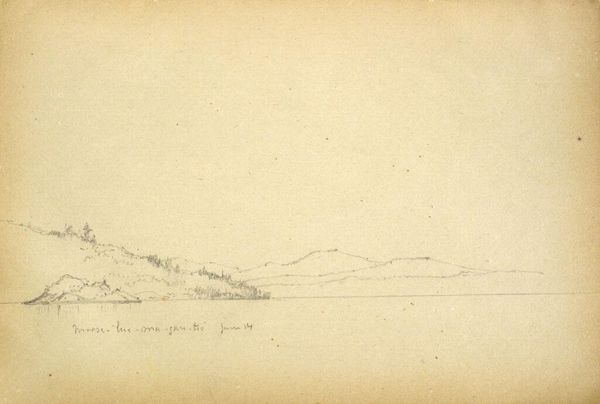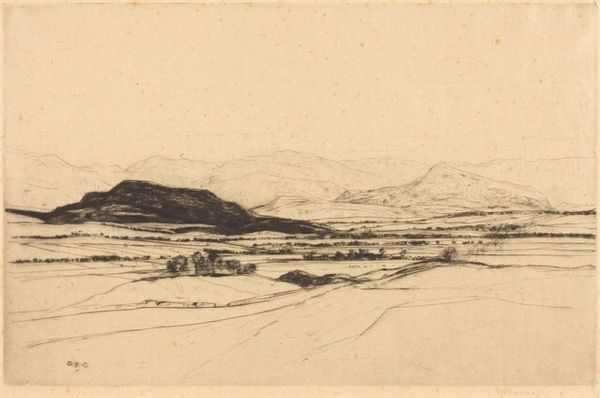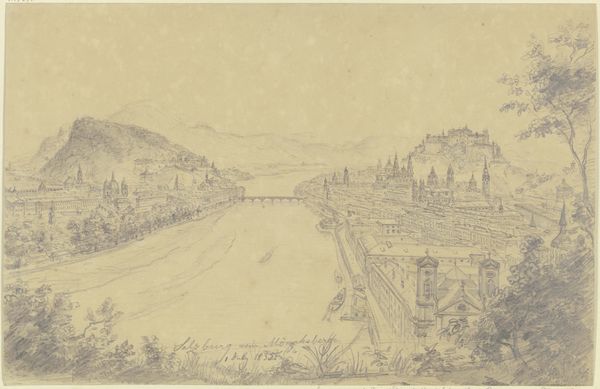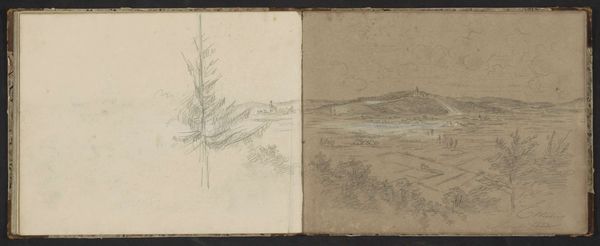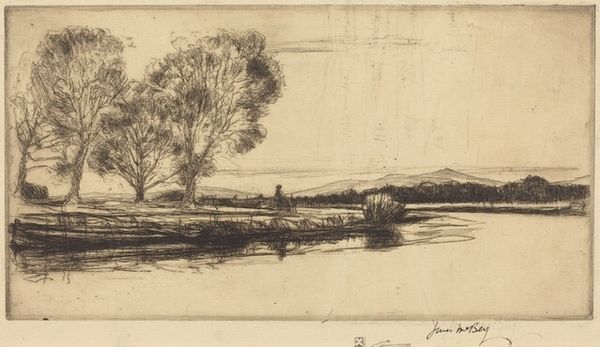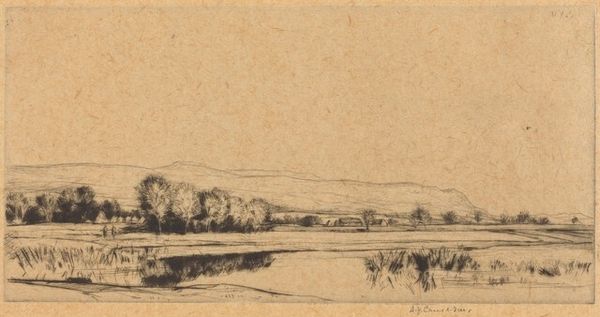
drawing, pencil
#
drawing
#
amateur sketch
#
light pencil work
#
pen sketch
#
sketch book
#
hand drawn type
#
landscape
#
personal sketchbook
#
pen-ink sketch
#
mountain
#
pencil
#
sketchbook drawing
#
cityscape
#
sketchbook art
#
realism
#
initial sketch
Copyright: Rijks Museum: Open Domain
Anton Mauve made this pencil drawing, Bad Godesberg aan de Rijn, during the late 19th century. Mauve, a Dutch realist painter, worked in a period where industrialization rapidly changed the landscape and traditional ways of life. The image shows a panoramic view of Bad Godesberg, a town on the Rhine, with its architectural structures nestled among nature. The detailed rendering of the scene, with a subdued palette, evokes a quiet mood. What does it mean to create such a scene during the Industrial Revolution? The work appears to celebrate the beauty of the natural world and the quiet dignity of small-town life, setting it in contrast to the grim realities of urban industrial centers. Mauve’s vision offers not just a scenic view but an emotional landscape. The drawing invites a moment of reflection on our relationship with place, time, and progress.
Comments
No comments
Be the first to comment and join the conversation on the ultimate creative platform.
